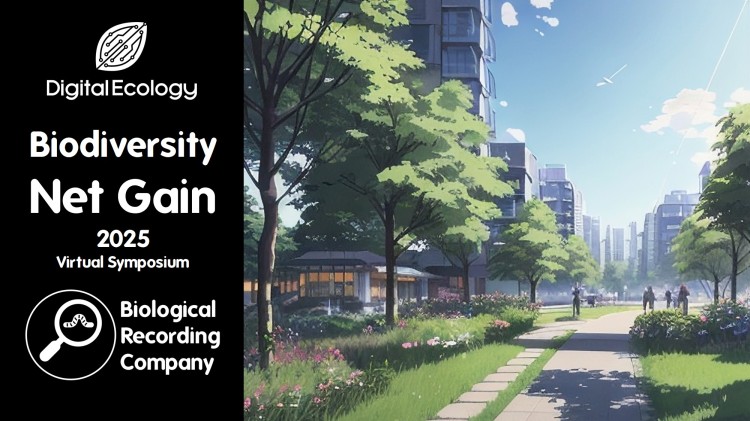Nature Overheard is a national programme of community science activities run by the Natural History Museum which aims to investigate the impact of noise pollution on insects. This talk will outline how the project was developed through co-design, how participants have been getting involved over the first year of delivery in activities designed for different levels of engagement, and present initial results of the main survey.
Dr Abigail Lowe is a Community Science Officer at the Natural History Museum, where she leads the delivery of Nature Overheard. Her PhD research, undertaken at the National Botanic Garden of Wales and Bangor University used DNA metabarcoding to investigate pollinator foraging and led to a huge interest in biological recording and community science.
Q&A Dr Abigail Lowe
- Does your project accept records at any taxonomic level?
In the online data submission form there is currently only the ability to record to the groups that we are asking people to record to. I’m aware there will be cases where people can actually identify the species. I advise that participants add the species name in the photo filename. This can then be picked up by the project verifiers when they work through the submissions and the species information will be retained. - Do phone settings and the use of different devices impact the results?
We ask participants to provide details of the make and model of the device that they have used within the data submission form. This enables us to take these differences into consideration during analysis. The more recordings that we get, the more we’ll be able to account for these differences. - Are you recording any areas that are not next to roads to establish baseline data for areas that are not impacted by noise pollution?
To date, we have only asked for survey data from areas within 10 metres of a road. The level of traffic on these roads varies greatly by site, with some roads being much quieter than others. As with any citizen science project, we’ve had to figure out what we can include, and at the moment areas away from roads are outside the scope of the project. - Can noise exposure to insects during larval development have significant impacts on the organism?
That’s a great question! The truth is that there is still so much that we don’t know and this probably falls within this category. Insects are extremely variable, so factors that impact a species during larval development can vary from one group to the next. This is something that probably needs further research. - Does noise pollution impact insects more or less than other groups (such as birds and mammals)?
The amount of research that has been published on the subject of noise pollution and insects is relatively limited. This means that we’re probably not in a position to answer this question yet and it is important that we continue to build on the research through projects like Nature Overheard. - How can we help as individuals reduce noise pollution for insects and other wildlife?
The biggest cause of noise pollution is traffic, so any actions that reduce the level of traffic on our roads are helpful. This could be using public transport for journeys, car sharing or cycling in situations where you would normally drive. I understand that driving is a necessity for many people’s personal and work lives, and public transport is variable in its coverage across the UK. I don’t think it is practical to expect everyone to give up their cars – but if we all make a small effort to reduce our traffic footprints we can reduce noise pollution (as well as carbon emissions).
Further info
- Nature Overheard Programme: https://www.nhm.ac.uk/take-part/monitor-and-encourage-nature/nature-overheard.html
- Nature Overheard Survey: https://www.nhm.ac.uk/take-part/monitor-and-encourage-nature/nature-overheard/nature-overheard-survey.html
- Nature Overheard Survey Protocol (English): https://www.nhm.ac.uk/content/dam/nhmwww/take-part/monitor-and-encourage-nature/nature-overheard/nature-overheard-survey-instruction-booklet.pdf
- Nature Overheard Survey Protocol (Welsh): https://www.nhm.ac.uk/content/dam/nhmwww/take-part/monitor-and-encourage-nature/nature-overheard/nature-overheard-survey-instruction-booklet-welsh.pdf
- Simplified recording form: https://www.nhm.ac.uk/content/dam/nhmwww/take-part/monitor-and-encourage-nature/nature-overheard/nature-overheard-a4-recording-form.pdf
- FlyTunes: https://www.zooniverse.org/projects/nhmcommunityscience/flytunes
- Insect Quiz: https://www.nhm.ac.uk/discover/insect-quiz.html
- What’s that sound: https://www.nhm.ac.uk/discover/what-is-that-sound.html
- Urban Nature Project: https://www.nhm.ac.uk/about-us/urban-nature-project.html
- Abi’s entoLIVE about here PhD: https://www.eventbrite.co.uk/e/plants-for-pollinators-using-dna-to-explore-relationships-in-gardens-tickets-804721021237
entoLIVE
- Upcoming entoLIVE webinars: https://www.eventbrite.com/cc/entolive-webinars-74679
- If you’d like to donate to the entoLIVE programme, you can do so through the GoFundMe campaign: https://gofund.me/a699e0df
- Subscribe to the Biological Recording Company YouTube channel: https://www.youtube.com/@biologicalrecordingcompany
entoLIVE is delivered by the Biological Recording Company, British Entomological & Natural History Society and Royal Entomological Society, with support from Buglife, Field Studies Council and National Biodiversity Network Trust.
- Find out about more about the British Entomological & Natural History Society: https://www.benhs.org.uk/
- Check out the Royal Entomological Society‘s NEW £15 Associate Membership: https://www.royensoc.co.uk/shop/membership-and-fellowship/associate-member/
- Discover adult, family and junior membership options with the Amateur Entomologists’ Society: https://www.amentsoc.org/membership/
- Explore upcoming events and training opportunities from the Biological Recording Company: https://www.eventbrite.co.uk/o/the-biological-recording-company-35982868173







